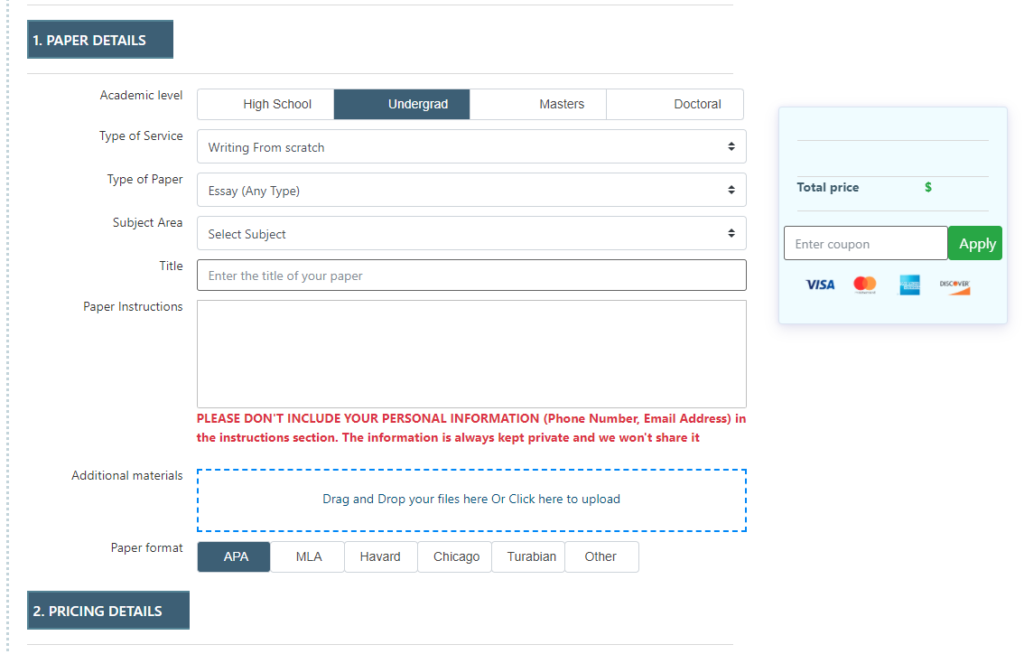- RADIOLOGY REPORT
LOCATION: Outpatient, Hospital
PATIENT: Eric Tayes
ORDERING PHYSICIAN: Frank Gaul, MD
ATTENDING/ADMIT PHYSICIAN: Frank Gaul, MD
RADIOLOGIST: Morton Monson, MD
EXAMINATION: Ultrasound of both lower extremities; abdomen ultrasound.
CLINICAL SYMPTOMS: Lower extremity swelling, Respiratory distress.FINDINGS: Ultrasound examination of the deep venous system of both lower extremities is negative. No evidence of deep venous thrombosis in either lower extremity. The posterior tibial, greater saphenous, and popliteal through femoral veins are patent and negative for thrombus bilaterally. Normal phasicity.
Abdomen Ultrasound: Diffusely coarsened echotexture of the liver with some nodularity consistent with fatty infiltration. Cirrhotic configuration of the liver. Small calcified granuloma in the spleen. The spleen is otherwise negative. There is ascites in all four quadrants. No bile duct dilatation. No gallbladder wall thickening or cholelithiasis. Small amount of fluid adjacent to the gallbladder is likely related to the ascites. The pancreas is obscured by bowel gas. The abdominal aorta is of normal caliber. The right kidney measures approximately 9 cm in length and shows no evidence of hydronephrosis, calculi, or mass. The left kidney measures approximately 9.9 cm in length and shows no evidence of hydronephrosis, calculi, or mass.
Which physician are you coding for? __________________________________
- RADIOLOGY REPORT
LOCATION: Outpatient, Hospital
PATIENT: Eric Tayes
ORDERING PHYSICIAN: Frank Gaul, MD
ATTENDING/ADMIT PHYSICIAN: Frank Gaul, MD
RADIOLOGIST: Morton Monson, MD
EXAMINATION: Ultrasound of both lower extremities; abdomen ultrasound.
CLINICAL SYMPTOMS: Lower extremity swelling, Respiratory distress.FINDINGS: Ultrasound examination of the deep venous system of both lower extremities is negative. No evidence of deep venous thrombosis in either lower extremity. The posterior tibial, greater saphenous, and popliteal through femoral veins are patent and negative for thrombus bilaterally. Normal phasicity.
Abdomen Ultrasound: Diffusely coarsened echotexture of the liver with some nodularity consistent with fatty infiltration. Cirrhotic configuration of the liver. Small calcified granuloma in the spleen. The spleen is otherwise negative. There is ascites in all four quadrants. No bile duct dilatation. No gallbladder wall thickening or cholelithiasis. Small amount of fluid adjacent to the gallbladder is likely related to the ascites. The pancreas is obscured by bowel gas. The abdominal aorta is of normal caliber. The right kidney measures approximately 9 cm in length and shows no evidence of hydronephrosis, calculi, or mass. The left kidney measures approximately 9.9 cm in length and shows no evidence of hydronephrosis, calculi, or mass.
Identify the correct ICD-9-CM diagnosis code(s) for the above scenario:
ICD-9-CM _________,
ICD-9-CM _________,
ICD-9-CM _________
- RADIOLOGY REPORT
LOCATION: Outpatient, Hospital
PATIENT: Eric Tayes
ORDERING PHYSICIAN: Frank Gaul, MD
ATTENDING/ADMIT PHYSICIAN: Frank Gaul, MD
RADIOLOGIST: Morton Monson, MD
EXAMINATION: Ultrasound of both lower extremities; abdomen ultrasound.
CLINICAL SYMPTOMS: Lower extremity swelling, Respiratory distress.FINDINGS: Ultrasound examination of the deep venous system of both lower extremities is negative. No evidence of deep venous thrombosis in either lower extremity. The posterior tibial, greater saphenous, and popliteal through femoral veins are patent and negative for thrombus bilaterally. Normal phasicity.
Abdomen Ultrasound: Diffusely coarsened echotexture of the liver with some nodularity consistent with fatty infiltration. Cirrhotic configuration of the liver. Small calcified granuloma in the spleen. The spleen is otherwise negative. There is ascites in all four quadrants. No bile duct dilatation. No gallbladder wall thickening or cholelithiasis. Small amount of fluid adjacent to the gallbladder is likely related to the ascites. The pancreas is obscured by bowel gas. The abdominal aorta is of normal caliber. The right kidney measures approximately 9 cm in length and shows no evidence of hydronephrosis, calculi, or mass. The left kidney measures approximately 9.9 cm in length and shows no evidence of hydronephrosis, calculi, or mass.
Identify the correct CPT-4 procedure code(s) for the above scenario:
CPT-4: __________,
CPT-4: __________
- RADIOLOGY REPORT
LOCATION: Outpatient, Hospital
PATIENT: Eric Tayes
ORDERING PHYSICIAN: Frank Gaul, MD
ATTENDING/ADMIT PHYSICIAN: Frank Gaul, MD
RADIOLOGIST: Morton Monson, MD
EXAMINATION: Ultrasound of both lower extremities; abdomen ultrasound.
CLINICAL SYMPTOMS: Lower extremity swelling, Respiratory distress.FINDINGS: Ultrasound examination of the deep venous system of both lower extremities is negative. No evidence of deep venous thrombosis in either lower extremity. The posterior tibial, greater saphenous, and popliteal through femoral veins are patent and negative for thrombus bilaterally. Normal phasicity.
Abdomen Ultrasound: Diffusely coarsened echotexture of the liver with some nodularity consistent with fatty infiltration. Cirrhotic configuration of the liver. Small calcified granuloma in the spleen. The spleen is otherwise negative. There is ascites in all four quadrants. No bile duct dilatation. No gallbladder wall thickening or cholelithiasis. Small amount of fluid adjacent to the gallbladder is likely related to the ascites. The pancreas is obscured by bowel gas. The abdominal aorta is of normal caliber. The right kidney measures approximately 9 cm in length and shows no evidence of hydronephrosis, calculi, or mass. The left kidney measures approximately 9.9 cm in length and shows no evidence of hydronephrosis, calculi, or mass.
What modifier should be added to the CPT-4 code in order to submit the insurance claim?__________
- RADIOLOGY REPORT
LOCATION: Outpatient, Hospital
PATIENT: Eric Tayes
ORDERING PHYSICIAN: Frank Gaul, MD
ATTENDING/ADMIT PHYSICIAN: Frank Gaul, MD
RADIOLOGIST: Morton Monson, MD
EXAMINATION: Ultrasound of both lower extremities; abdomen ultrasound.
CLINICAL SYMPTOMS: Lower extremity swelling, Respiratory distress.FINDINGS: Ultrasound examination of the deep venous system of both lower extremities is negative. No evidence of deep venous thrombosis in either lower extremity. The posterior tibial, greater saphenous, and popliteal through femoral veins are patent and negative for thrombus bilaterally. Normal phasicity.
Abdomen Ultrasound: Diffusely coarsened echotexture of the liver with some nodularity consistent with fatty infiltration. Cirrhotic configuration of the liver. Small calcified granuloma in the spleen. The spleen is otherwise negative. There is ascites in all four quadrants. No bile duct dilatation. No gallbladder wall thickening or cholelithiasis. Small amount of fluid adjacent to the gallbladder is likely related to the ascites. The pancreas is obscured by bowel gas. The abdominal aorta is of normal caliber. The right kidney measures approximately 9 cm in length and shows no evidence of hydronephrosis, calculi, or mass. The left kidney measures approximately 9.9 cm in length and shows no evidence of hydronephrosis, calculi, or mass.
What claim form will be submitted for the radiologist’s services? ______________
- HEMODIALYSIS PROGRESS NOTE
LOCATION: Inpatient, Hospital
PATIENT: Sandra Amada
ATTENDING PHYSICIAN: George Orbitz, MDHEMODIALYSIS PROGRESS NOTE: The patient is seen and examined during hemodialysis. The patient appears to be hemodynamically stable, not in any form of respiratory distress or compromise.
LABORATORY STUDIES: Latest labs were performed 4 weeks ago. Hemogram shows an H&H (hematocrit and hemoglobin) of 8.6/26.2. WBC (white blood count) is 9.9, normochromic/normocytic indices. Platelets are 143. There is left shift of 81.1% neutrophils. Sodium is 139, potassium 4, chloride 98, CO2 (carbon dioxide) is 30.7, BUN (blood urea nitrogen) and creatinine 31/3.4, glucose 121, and calcium 8.2. Today, we will dialyze her for a total of 4 hours using an HP-150 dialyzer via her right-sided Perm-A-Cath. We will use a 2.0 potassium bath, and we will not give her any heparin loading dose during this treatment.
PHYSICAL EXAM: At present time, vital signs are stable. Blood pressure is 128/57. Heart rate is 80, and she is tolerating a blood flow rate of 500 ml (milliliter) per minute. Normocephalic and atraumatic. Pale palpebral conjunctivae, anicteric sclerae. No nasal or aural discharge. Moist tongue and buccal mucosa. No pharyngeal hyperemia, congestion, or exudates. Supple neck. No lymphadenopathy. Symmetrical chest. No retractions. Positive rhonchi. No crackles or wheezes. S1 (first heart sound) and S2 (second heart sound) distinct. No S3 (third heart sound) or S4 (fourth heart sound). Regular rate and rhythm. Abdomen: Positive bowel sounds, soft and nontender. No abdominal bruits. Both upper and lower extremities reveal arthritic changes. Pulses are fair.
ASSESSMENT/PLAN:
I. End-stage renal disease (on maintenance hemodialysis, Monday, Wednesday, and Friday), most likely secondary to the following:
A. Hypertension. Continue same antihypertensive regimen as ordered.
B. Type 2 diabetes mellitus. Continue oral antidiabetic agents. Continue the same dialysis orders as above.
C. Previous chronic use of NSAID (nonsteroidal antiinflammatory drug)/COX-2 inhibitors.
II. Anemia due to chronic renal disease.
III. Questionable diverticulosis; status post multiple herniorrhaphies; status post- cholecystectomy.
IV. Discharge planning: The plan is to discharge the patient to rehabilitation medicine.
At this time, the patient appears to be stable and is tolerating hemodialysis. We will continue to follow this patient from the renal/hemodialysis standpoint. She will get erythropoietin 10,000 units IV (intravenous) after hemodialysis today.In this scenario, which physician are you coding for?__________________________________
- HEMODIALYSIS PROGRESS NOTE
LOCATION: Inpatient, Hospital
PATIENT: Sandra Amada
ATTENDING PHYSICIAN: George Orbitz, MDHEMODIALYSIS PROGRESS NOTE: The patient is seen and examined during hemodialysis. The patient appears to be hemodynamically stable, not in any form of respiratory distress or compromise.
LABORATORY STUDIES: Latest labs were performed 4 weeks ago. Hemogram shows an H&H (hematocrit and hemoglobin) of 8.6/26.2. WBC (white blood count) is 9.9, normochromic/normocytic indices. Platelets are 143. There is left shift of 81.1% neutrophils. Sodium is 139, potassium 4, chloride 98, CO2 (carbon dioxide) is 30.7, BUN (blood urea nitrogen) and creatinine 31/3.4, glucose 121, and calcium 8.2. Today, we will dialyze her for a total of 4 hours using an HP-150 dialyzer via her right-sided Perm-A-Cath. We will use a 2.0 potassium bath, and we will not give her any heparin loading dose during this treatment.
PHYSICAL EXAM: At present time, vital signs are stable. Blood pressure is 128/57. Heart rate is 80, and she is tolerating a blood flow rate of 500 ml (milliliter) per minute. Normocephalic and atraumatic. Pale palpebral conjunctivae, anicteric sclerae. No nasal or aural discharge. Moist tongue and buccal mucosa. No pharyngeal hyperemia, congestion, or exudates. Supple neck. No lymphadenopathy. Symmetrical chest. No retractions. Positive rhonchi. No crackles or wheezes. S1 (first heart sound) and S2 (second heart sound) distinct. No S3 (third heart sound) or S4 (fourth heart sound). Regular rate and rhythm. Abdomen: Positive bowel sounds, soft and nontender. No abdominal bruits. Both upper and lower extremities reveal arthritic changes. Pulses are fair.
ASSESSMENT/PLAN:
I. End-stage renal disease (on maintenance hemodialysis, Monday, Wednesday, and Friday), most likely secondary to the following:
A. Hypertension. Continue same antihypertensive regimen as ordered.
B. Type 2 diabetes mellitus. Continue oral antidiabetic agents. Continue the same dialysis orders as above.
C. Previous chronic use of NSAID (nonsteroidal antiinflammatory drug)/COX-2 inhibitors.
II. Anemia due to chronic renal disease.
III. Questionable diverticulosis; status post multiple herniorrhaphies; status post- cholecystectomy.
IV. Discharge planning: The plan is to discharge the patient to rehabilitation medicine.
At this time, the patient appears to be stable and is tolerating hemodialysis. We will continue to follow this patient from the renal/hemodialysis standpoint. She will get erythropoietin 10,000 units IV (intravenous) after hemodialysis today.Identify the correct (ICD-9-CM) diagnosis code(s) for the above scenario:
ICD-9-CM __________,ICD-9-CM __________,
ICD-9-CM __________,
ICD-9-CM __________.
- HEMODIALYSIS PROGRESS NOTE
LOCATION: Inpatient, Hospital
PATIENT: Sandra Amada
ATTENDING PHYSICIAN: George Orbitz, MDHEMODIALYSIS PROGRESS NOTE: The patient is seen and examined during hemodialysis. The patient appears to be hemodynamically stable, not in any form of respiratory distress or compromise.
LABORATORY STUDIES: Latest labs were performed 4 weeks ago. Hemogram shows an H&H (hematocrit and hemoglobin) of 8.6/26.2. WBC (white blood count) is 9.9, normochromic/normocytic indices. Platelets are 143. There is left shift of 81.1% neutrophils. Sodium is 139, potassium 4, chloride 98, CO2 (carbon dioxide) is 30.7, BUN (blood urea nitrogen) and creatinine 31/3.4, glucose 121, and calcium 8.2. Today, we will dialyze her for a total of 4 hours using an HP-150 dialyzer via her right-sided Perm-A-Cath. We will use a 2.0 potassium bath, and we will not give her any heparin loading dose during this treatment.
PHYSICAL EXAM: At present time, vital signs are stable. Blood pressure is 128/57. Heart rate is 80, and she is tolerating a blood flow rate of 500 ml (milliliter) per minute. Normocephalic and atraumatic. Pale palpebral conjunctivae, anicteric sclerae. No nasal or aural discharge. Moist tongue and buccal mucosa. No pharyngeal hyperemia, congestion, or exudates. Supple neck. No lymphadenopathy. Symmetrical chest. No retractions. Positive rhonchi. No crackles or wheezes. S1 (first heart sound) and S2 (second heart sound) distinct. No S3 (third heart sound) or S4 (fourth heart sound). Regular rate and rhythm. Abdomen: Positive bowel sounds, soft and nontender. No abdominal bruits. Both upper and lower extremities reveal arthritic changes. Pulses are fair.
ASSESSMENT/PLAN:
I. End-stage renal disease (on maintenance hemodialysis, Monday, Wednesday, and Friday), most likely secondary to the following:
A. Hypertension. Continue same antihypertensive regimen as ordered.
B. Type 2 diabetes mellitus. Continue oral antidiabetic agents. Continue the same dialysis orders as above.
C. Previous chronic use of NSAID (nonsteroidal antiinflammatory drug)/COX-2 inhibitors.
II. Anemia due to chronic renal disease.
III. Questionable diverticulosis; status post multiple herniorrhaphies; status post- cholecystectomy.
IV. Discharge planning: The plan is to discharge the patient to rehabilitation medicine.
At this time, the patient appears to be stable and is tolerating hemodialysis. We will continue to follow this patient from the renal/hemodialysis standpoint. She will get erythropoietin 10,000 units IV (intravenous) after hemodialysis today.Identify the correct procedure code (CPT-4) for the above scenario:
CPT-4 __________
- HEMODIALYSIS PROGRESS NOTE
LOCATION: Inpatient, Hospital
PATIENT: Sandra Amada
ATTENDING PHYSICIAN: George Orbitz, MDHEMODIALYSIS PROGRESS NOTE: The patient is seen and examined during hemodialysis. The patient appears to be hemodynamically stable, not in any form of respiratory distress or compromise.
LABORATORY STUDIES: Latest labs were performed 4 weeks ago. Hemogram shows an H&H (hematocrit and hemoglobin) of 8.6/26.2. WBC (white blood count) is 9.9, normochromic/normocytic indices. Platelets are 143. There is left shift of 81.1% neutrophils. Sodium is 139, potassium 4, chloride 98, CO2 (carbon dioxide) is 30.7, BUN (blood urea nitrogen) and creatinine 31/3.4, glucose 121, and calcium 8.2. Today, we will dialyze her for a total of 4 hours using an HP-150 dialyzer via her right-sided Perm-A-Cath. We will use a 2.0 potassium bath, and we will not give her any heparin loading dose during this treatment.
PHYSICAL EXAM: At present time, vital signs are stable. Blood pressure is 128/57. Heart rate is 80, and she is tolerating a blood flow rate of 500 ml (milliliter) per minute. Normocephalic and atraumatic. Pale palpebral conjunctivae, anicteric sclerae. No nasal or aural discharge. Moist tongue and buccal mucosa. No pharyngeal hyperemia, congestion, or exudates. Supple neck. No lymphadenopathy. Symmetrical chest. No retractions. Positive rhonchi. No crackles or wheezes. S1 (first heart sound) and S2 (second heart sound) distinct. No S3 (third heart sound) or S4 (fourth heart sound). Regular rate and rhythm. Abdomen: Positive bowel sounds, soft and nontender. No abdominal bruits. Both upper and lower extremities reveal arthritic changes. Pulses are fair.
ASSESSMENT/PLAN:
I. End-stage renal disease (on maintenance hemodialysis, Monday, Wednesday, and Friday), most likely secondary to the following:
A. Hypertension. Continue same antihypertensive regimen as ordered.
B. Type 2 diabetes mellitus. Continue oral antidiabetic agents. Continue the same dialysis orders as above.
C. Previous chronic use of NSAID (nonsteroidal antiinflammatory drug)/COX-2 inhibitors.
II. Anemia due to chronic renal disease.
III. Questionable diverticulosis; status post multiple herniorrhaphies; status post- cholecystectomy.
IV. Discharge planning: The plan is to discharge the patient to rehabilitation medicine.
At this time, the patient appears to be stable and is tolerating hemodialysis. We will continue to follow this patient from the renal/hemodialysis standpoint. She will get erythropoietin 10,000 units IV (intravenous) after hemodialysis today.Should a modifier be added to the CPT code in order to submit the insurance claim?______________
- HEMODIALYSIS PROGRESS NOTE
LOCATION: Inpatient, Hospital
PATIENT: Sandra Amada
ATTENDING PHYSICIAN: George Orbitz, MDHEMODIALYSIS PROGRESS NOTE: The patient is seen and examined during hemodialysis. The patient appears to be hemodynamically stable, not in any form of respiratory distress or compromise.
LABORATORY STUDIES: Latest labs were performed 4 weeks ago. Hemogram shows an H&H (hematocrit and hemoglobin) of 8.6/26.2. WBC (white blood count) is 9.9, normochromic/normocytic indices. Platelets are 143. There is left shift of 81.1% neutrophils. Sodium is 139, potassium 4, chloride 98, CO2 (carbon dioxide) is 30.7, BUN (blood urea nitrogen) and creatinine 31/3.4, glucose 121, and calcium 8.2. Today, we will dialyze her for a total of 4 hours using an HP-150 dialyzer via her right-sided Perm-A-Cath. We will use a 2.0 potassium bath, and we will not give her any heparin loading dose during this treatment.
PHYSICAL EXAM: At present time, vital signs are stable. Blood pressure is 128/57. Heart rate is 80, and she is tolerating a blood flow rate of 500 ml (milliliter) per minute. Normocephalic and atraumatic. Pale palpebral conjunctivae, anicteric sclerae. No nasal or aural discharge. Moist tongue and buccal mucosa. No pharyngeal hyperemia, congestion, or exudates. Supple neck. No lymphadenopathy. Symmetrical chest. No retractions. Positive rhonchi. No crackles or wheezes. S1 (first heart sound) and S2 (second heart sound) distinct. No S3 (third heart sound) or S4 (fourth heart sound). Regular rate and rhythm. Abdomen: Positive bowel sounds, soft and nontender. No abdominal bruits. Both upper and lower extremities reveal arthritic changes. Pulses are fair.
ASSESSMENT/PLAN:
I. End-stage renal disease (on maintenance hemodialysis, Monday, Wednesday, and Friday), most likely secondary to the following:
A. Hypertension. Continue same antihypertensive regimen as ordered.
B. Type 2 diabetes mellitus. Continue oral antidiabetic agents. Continue the same dialysis orders as above.
C. Previous chronic use of NSAID (nonsteroidal antiinflammatory drug)/COX-2 inhibitors.
II. Anemia due to chronic renal disease.
III. Questionable diverticulosis; status post multiple herniorrhaphies; status post- cholecystectomy.
IV. Discharge planning: The plan is to discharge the patient to rehabilitation medicine.
At this time, the patient appears to be stable and is tolerating hemodialysis. We will continue to follow this patient from the renal/hemodialysis standpoint. She will get erythropoietin 10,000 units IV (intravenous) after hemodialysis today.What claim form will be submitted for the physician’s services? ________________








